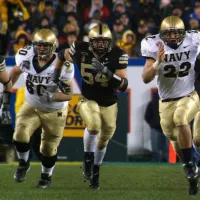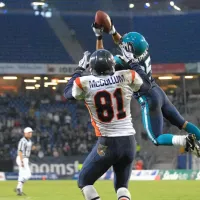A detailed timeline of the impact and legacy of Will Rogers across different fields.
Will Rogers, born a citizen of the Cherokee Nation, was a celebrated American vaudeville performer, actor, and humorous social commentator, often called "Oklahoma's Favorite Son." He achieved immense popularity and became the highest-paid Hollywood film star by the mid-1930s. Rogers traveled the world extensively, starred in 71 films, and penned over 4,000 nationally syndicated newspaper columns, establishing himself as a leading political wit. His life tragically ended in 1935 in a plane crash in Alaska alongside aviator Wiley Post.
1922: Editorial in The New York Times
In 1922, The New York Times published an editorial comparing Will Rogers in the Follies to Aristophanes, recognizing his tradition of political satire.
1922: Newspaper Column Begins
In 1922, Will Rogers began writing his newspaper column, which ran until 1935, expressing traditional morality and downplaying the seriousness of political problems.
1935: Expressing Views of the Common Man Continues
Until 1935, Will Rogers continued to express the views of the "common man" in his acting and literary career, emphasizing individualism and hard work.
1935: Newspaper Column Ends
Will Rogers' newspaper column, which began in 1922, ended in 1935. In his column, he expressed his traditional morality and his belief that political problems were not as serious as they sounded.
1936: Portrayal in The Great Ziegfeld
In 1936, Will Rogers was portrayed by A.A. Trimble in a cameo in the film "The Great Ziegfeld".
1936: Hospital Renamed in Honor
In 1936, the NVA Hospital in Saranac Lake, New York, was renamed the Will Rogers Memorial Hospital by the National Vaudeville Artists association.
1936: Will Rogers Memorial Center Built
The Will Rogers Memorial Center was built in Fort Worth, Texas, in 1936.
June 6, 1939: Dedication of Statue in the Capitol
On June 6, 1939, a bronze statue of Will Rogers, sculpted by Jo Davidson, was dedicated in the Capitol before a crowd of over 2,000 people.
May 19, 1944: Body Moved to Claremore
On May 19, 1944, Will Rogers's body was moved from Glendale, California, to the Will Rogers Memorial Museum in Claremore, Oklahoma.
1944: Will Rogers State Historic Park Established
From 1944, Will Rogers's California home, stables, and polo fields were preserved for public enjoyment as Will Rogers State Historic Park in Pacific Palisades, after his widow Betty willed the property to the state of California, stipulating that polo be played on the field every year.
1944: Re-interment in Claremore, Oklahoma
In 1944, Will Rogers was re-interred at the Will Rogers Memorial in Claremore, Oklahoma.
1947: College Football Bowl Game Named in His Honor
In 1947, a college football bowl game was named in Will Rogers's honor, but the event folded after the first year.
November 4, 1948: Commemorative Postage Stamp Issued
On November 4, 1948, the United States Post Office commemorated Will Rogers with a three-cent postage stamp.
1949: Portrayal in Look for the Silver Lining
In 1949, Will Rogers was portrayed by his son, Will Rogers Jr., in a cameo in the film "Look for the Silver Lining".
February 16, 1950: Dedication of Riding into the Sunset at Texas Tech
On February 16, 1950, a casting of "Riding into the Sunset" was dedicated at the entrance to the main campus quad at Texas Tech University in Lubbock, Texas, by Rogers' friend, Amon G. Carter.
1952: Portrayal in The Story of Will Rogers
In 1952, Will Rogers was portrayed by his son, Will Rogers Jr., as the star of the film "The Story of Will Rogers".
1962: Will Rogers Day Observance Begins
In 1962, the town of Higgins, Texas, began an annual observance of Will Rogers Day, in honor of Rogers and his friendship with Frank Ewing.
1966: Launch of USS Will Rogers Submarine
In 1966, the USS Will Rogers (SSBN-659), the final ship of the Benjamin Franklin-class submarines, was launched.
1970: First Run of Will Rogers' USA
In 1970, James Whitmore performed the first of eight runs of the one-man play "Will Rogers' USA".
1972: Television Film of Will Rogers' USA
In 1972, James Whitmore portrayed Will Rogers in a television film of "Will Rogers' USA".
1974: Broadway Run of Will Rogers' USA
In 1974, James Whitmore performed a limited run of the one-man play "Will Rogers' USA" on Broadway.
1976: Rogers as Anchor of Stability
According to scholar Peter Rollins in 1976, Will Rogers was seen as an anchor of stability during the Roaring Twenties, reminding people of the recent past with his traditional values.
1976: Depiction in Artwork for Bell System
In 1976, Will Rogers was among the historical figures depicted in Stanley Meltzoff's artwork, "Our Nation's 200th Birthday, The Telephone's 100th Birthday," for Bell System.
1976: Criticism of Rogers' Philosophy
In 1976, film critic David Thomson described Will Rogers' philosophy as reactionary, dispiriting, and provincial in "A Biographical History of Film".
1979: Rogers as Iconic American Values
In 1979, Brown argued that Rogers held up a "magic mirror" reflecting iconic American values as the archetypical "American Democrat", "American Adam", and "American Prometheus".
1979: Performing Arts Stamp Issued
In 1979, the United States Postal Service issued a 15-cent stamp of Will Rogers as part of the "Performing Arts" series.
1980: Sociological-Psychological Assessment of Will's Relationship with His Father
In 1980, a sociological-psychological assessment by Roach was published, examining the relationship between Will Rogers and his father during Will's boyhood and teenage years, focusing on their differing expectations and personality clash.
1991: Broadway Production of The Will Rogers Follies
In 1991, "The Will Rogers Follies", a Tony Award-winning musical, was produced on Broadway, starring Keith Carradine in the lead role.
1994: Portrayal in Mrs. Parker and the Vicious Circle
In 1994, Keith Carradine also played Will Rogers in the film "Mrs. Parker and the Vicious Circle".
2000: Last Run of Will Rogers' USA
In 2000, James Whitmore performed the last of eight runs of the one-man play "Will Rogers' USA".
November 4, 2019: Google Doodle for 140th Birthday
On November 4, 2019, Google celebrated Will Rogers's 140th birthday with a Google Doodle.
January 8, 2025: Destruction of House and Stables
On January 8, 2025, the house and stables at Will Rogers State Historic Park burnt down during the Palisades Fire.
Mentioned in this timeline

Google LLC is a multinational technology company specializing in online...
California is a U S state on the Pacific Coast...

College football is a popular amateur sport in the United...

News encompasses information about current events disseminated through various media...

Football is a family of team sports primarily involving kicking...

Seattle is the most populous city in Washington state and...
Trending

3 months ago ATP Basel Day 2 Predictions: Wawrinka vs Kecmanovic, Mpetshi Perricard vs Fonseca
3 months ago Lindsey Halligan's Signal exchange with Anna Bower revealed, leading to controversy and publication.

7 months ago Mirra Andreeva vs. Yulia Putintseva at French Open; Putintseva Advances to Second Round
2 months ago Typhoon Kalmaegi Devastates Philippines: Hundreds Dead, Another Storm Threatens Hope

9 months ago Brandon Williams' Injury Fuels Mavericks' Playoff Fears; Comes off Bench in Game

7 months ago Klay Thompson Mourns Beloved Bulldog Rocco: A Heartfelt Tribute on Social Media.
Popular

Stranger Things created by the Duffer Brothers is a popular...

XXXTentacion born Jahseh Dwayne Ricardo Onfroy was a controversial yet...

Kelsey Grammer is an accomplished American actor producer and singer...

Candace Owens is an American conservative political commentator and author...

Bernie Sanders is a prominent American politician currently serving as...

Melania Trump a Slovenian-American former model has served as First...

